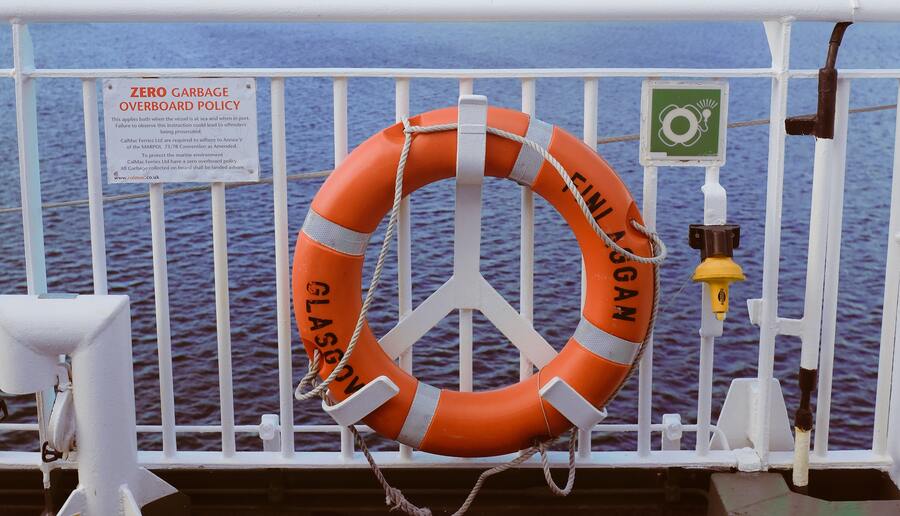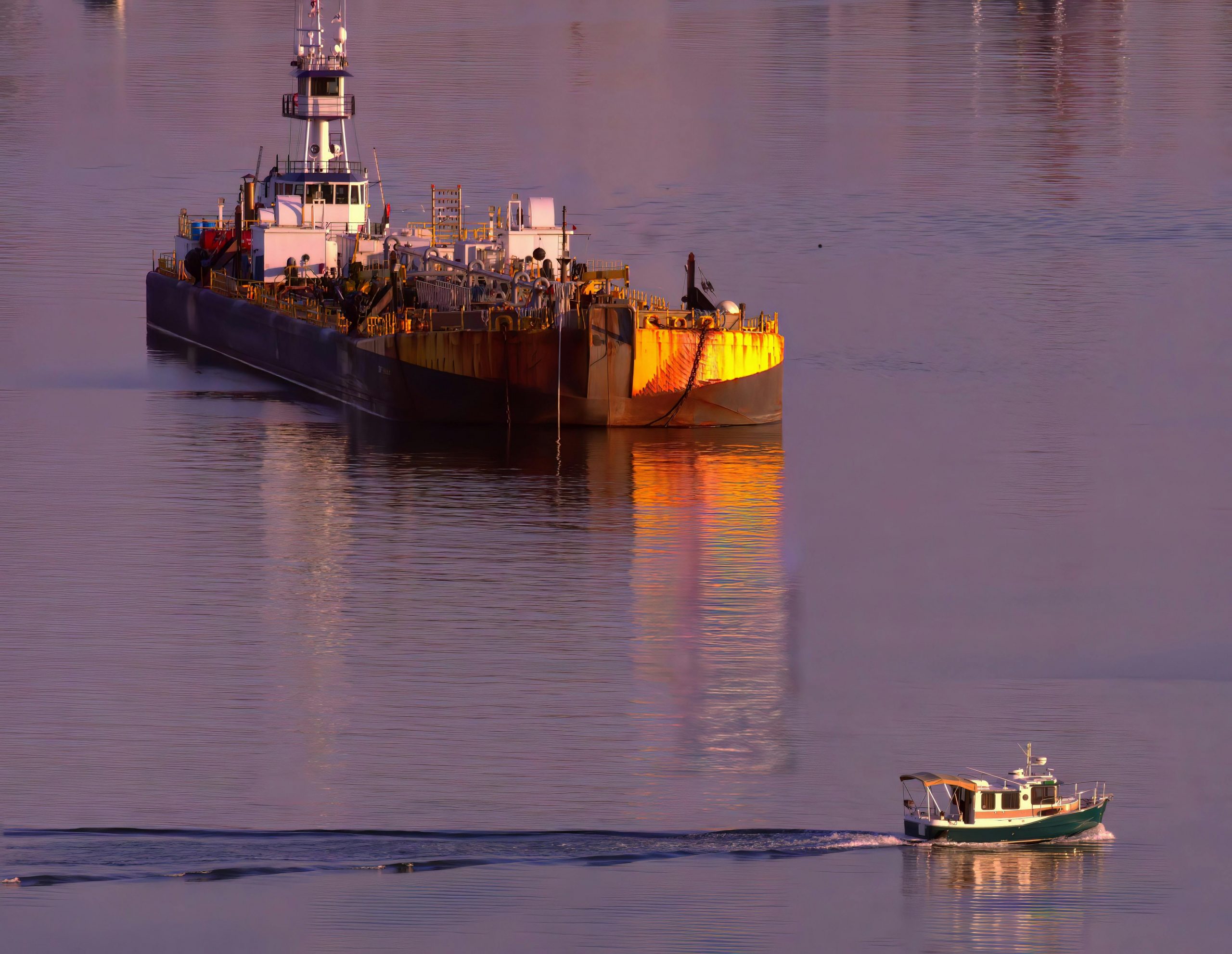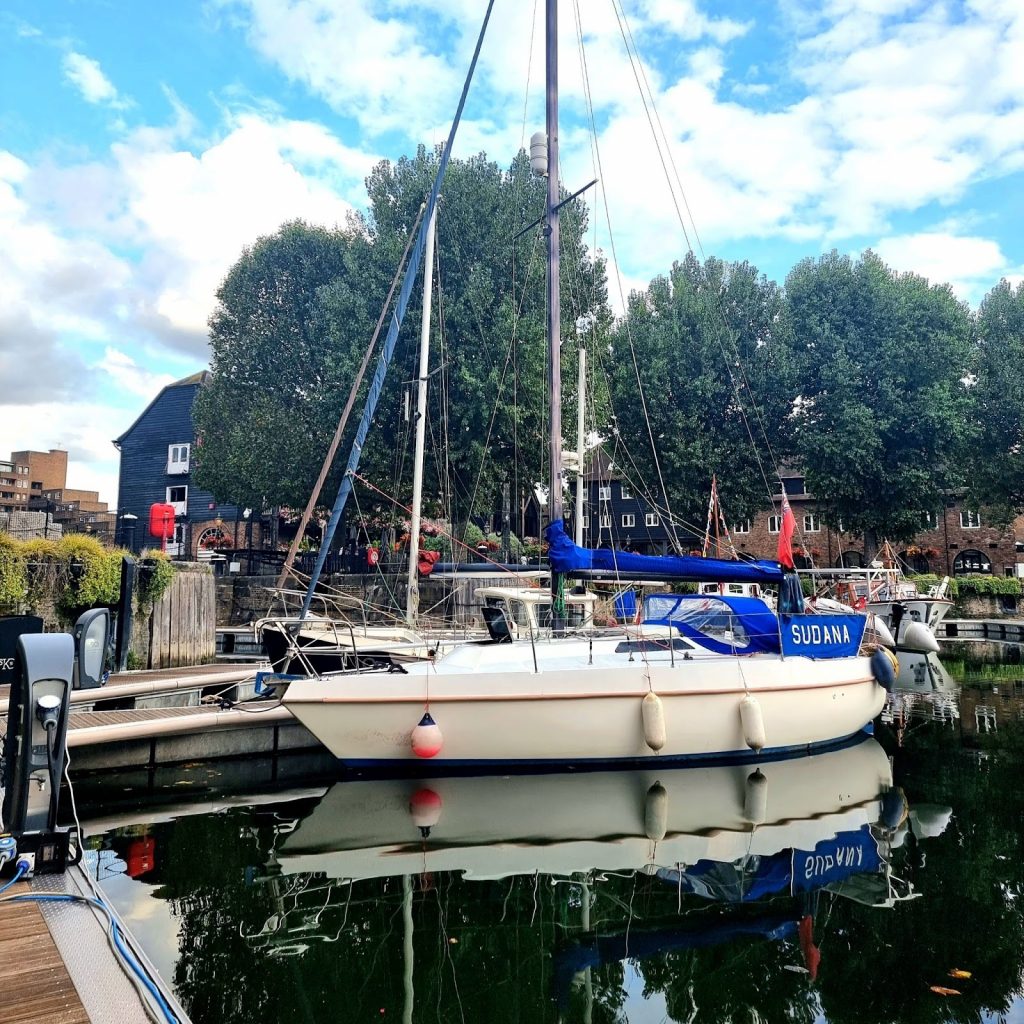Do you need lifejackets or buoyancy aids for your particular kind of boating? Here’s some expert advice from Baltic Lifejackets to help you make an informed decision about what you need for safety on the water.
Firstly you need to differentiate between the functions of a lifejacket and a buoyancy aid. Both products keep you afloat yet are designed for specific usage.
Lifejackets and Buoyancy Aids are rated throughout Europe with a Newton classification guide. With Buoyancy aids being 50 Newtons plus and Lifejackets starting at 100 Newtons.
NEWTON CLASSIFICATION FOR LIFEJACKETS AND BUOYANCY AIDS
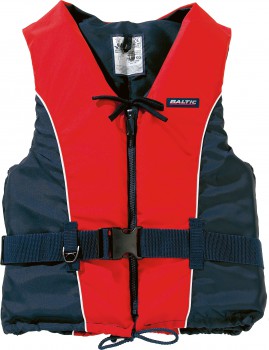 50 Newton Class / EN 393 / EN ISO 12402-5 (buoyancy aid)
Buoyancy aids and floatation clothing that hold a person afloat with a good margin of safety but won't turn you over into the safe back position or support you head. Buoyancy aids must only be used by swimmers and can only be manufactured for persons of 25kg and over.
100 Newton Class / EN 395 / EN ISO 12402-4 (lifejacket)
This class is typically inherent foam lifejackets with the buoyancy concentrated to the front and collar to help a person turn over onto the safe back position. These are suitable for swimmers and non-swimmers in inshore or in sheltered waters.
150 Newton Class / EN 396 / EN ISO 12402-3 (lifejacket)
Inflatable lifejackets have a good turning capacity when inflated. They can be inflated manually or automatically. They're designed for use by persons 40 kg by swimmers in all sea conditions.
275 Newton Class (lifejacket)
Inflatable lifejackets with extremely good turning capacity. These tend to be for industrial use only. Manual or Automatic inflation. They're for use by persons 40 kg and over in all sea conditions and the use of heavy industrial clothing.
Therefore is a lifejacket or buoyancy aid more suitable for your activity?
50 Newton Class / EN 393 / EN ISO 12402-5 (buoyancy aid)
Buoyancy aids and floatation clothing that hold a person afloat with a good margin of safety but won't turn you over into the safe back position or support you head. Buoyancy aids must only be used by swimmers and can only be manufactured for persons of 25kg and over.
100 Newton Class / EN 395 / EN ISO 12402-4 (lifejacket)
This class is typically inherent foam lifejackets with the buoyancy concentrated to the front and collar to help a person turn over onto the safe back position. These are suitable for swimmers and non-swimmers in inshore or in sheltered waters.
150 Newton Class / EN 396 / EN ISO 12402-3 (lifejacket)
Inflatable lifejackets have a good turning capacity when inflated. They can be inflated manually or automatically. They're designed for use by persons 40 kg by swimmers in all sea conditions.
275 Newton Class (lifejacket)
Inflatable lifejackets with extremely good turning capacity. These tend to be for industrial use only. Manual or Automatic inflation. They're for use by persons 40 kg and over in all sea conditions and the use of heavy industrial clothing.
Therefore is a lifejacket or buoyancy aid more suitable for your activity?
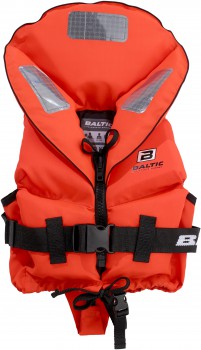 The rule of thumb is that Lifejackets in general should be worn when sailing offshore, and for all non-swimmers when taking to the water. There are two types of lifejackets: firstly inherently buoyant jackets, such as those for children or those you find on passenger ferries and secondly those which inflate on immersion in water.
It's more important that a lifejacket should be selected for fit and comfort and not to be able to ride up rather than the weight category indicated on the label. For children this is especially true and the lifejacket should never be purchased to ‘grow into’.
Buoyancy aids are generally found on those who are closer to the water surface as they can self-rescue where as a lifejacket can impede re-boarding. Therefore a buoyancy aid is the popular and obvious choice for sports such as water-skiing, dinghy sailing and kayaking.
A good buoyancy aid rated to 50 Newton class will support a person over 25 kg with a good freeboard, however it'll require the wearer to orientate their position in the water as it won't turn them over into the safe back position. This category contains all–purpose, specialist buoyancy aids and floatation clothing. These are popular products because they have a perfect balance between function, freedom of movement and security.
There are no overriding rules which applies, and if in doubt the team at Baltic Lifejackets will be happy to answer any questions you have, alternatively contact your local chandlery who'll be able to show you the range available.
Baltic Safety Products offer a wide range of products from traditional inflatable lifejackets, to MED/ SOLAS jackets as well as buoyancy aids for all types of watersports. The company has been dedicated to making safety a popular choice and therefore making boating inherently safer for over 30 years. Baltic products are all designed, tested and manufactured in Europe.
The rule of thumb is that Lifejackets in general should be worn when sailing offshore, and for all non-swimmers when taking to the water. There are two types of lifejackets: firstly inherently buoyant jackets, such as those for children or those you find on passenger ferries and secondly those which inflate on immersion in water.
It's more important that a lifejacket should be selected for fit and comfort and not to be able to ride up rather than the weight category indicated on the label. For children this is especially true and the lifejacket should never be purchased to ‘grow into’.
Buoyancy aids are generally found on those who are closer to the water surface as they can self-rescue where as a lifejacket can impede re-boarding. Therefore a buoyancy aid is the popular and obvious choice for sports such as water-skiing, dinghy sailing and kayaking.
A good buoyancy aid rated to 50 Newton class will support a person over 25 kg with a good freeboard, however it'll require the wearer to orientate their position in the water as it won't turn them over into the safe back position. This category contains all–purpose, specialist buoyancy aids and floatation clothing. These are popular products because they have a perfect balance between function, freedom of movement and security.
There are no overriding rules which applies, and if in doubt the team at Baltic Lifejackets will be happy to answer any questions you have, alternatively contact your local chandlery who'll be able to show you the range available.
Baltic Safety Products offer a wide range of products from traditional inflatable lifejackets, to MED/ SOLAS jackets as well as buoyancy aids for all types of watersports. The company has been dedicated to making safety a popular choice and therefore making boating inherently safer for over 30 years. Baltic products are all designed, tested and manufactured in Europe.
 50 Newton Class / EN 393 / EN ISO 12402-5 (buoyancy aid)
Buoyancy aids and floatation clothing that hold a person afloat with a good margin of safety but won't turn you over into the safe back position or support you head. Buoyancy aids must only be used by swimmers and can only be manufactured for persons of 25kg and over.
100 Newton Class / EN 395 / EN ISO 12402-4 (lifejacket)
This class is typically inherent foam lifejackets with the buoyancy concentrated to the front and collar to help a person turn over onto the safe back position. These are suitable for swimmers and non-swimmers in inshore or in sheltered waters.
150 Newton Class / EN 396 / EN ISO 12402-3 (lifejacket)
Inflatable lifejackets have a good turning capacity when inflated. They can be inflated manually or automatically. They're designed for use by persons 40 kg by swimmers in all sea conditions.
275 Newton Class (lifejacket)
Inflatable lifejackets with extremely good turning capacity. These tend to be for industrial use only. Manual or Automatic inflation. They're for use by persons 40 kg and over in all sea conditions and the use of heavy industrial clothing.
Therefore is a lifejacket or buoyancy aid more suitable for your activity?
50 Newton Class / EN 393 / EN ISO 12402-5 (buoyancy aid)
Buoyancy aids and floatation clothing that hold a person afloat with a good margin of safety but won't turn you over into the safe back position or support you head. Buoyancy aids must only be used by swimmers and can only be manufactured for persons of 25kg and over.
100 Newton Class / EN 395 / EN ISO 12402-4 (lifejacket)
This class is typically inherent foam lifejackets with the buoyancy concentrated to the front and collar to help a person turn over onto the safe back position. These are suitable for swimmers and non-swimmers in inshore or in sheltered waters.
150 Newton Class / EN 396 / EN ISO 12402-3 (lifejacket)
Inflatable lifejackets have a good turning capacity when inflated. They can be inflated manually or automatically. They're designed for use by persons 40 kg by swimmers in all sea conditions.
275 Newton Class (lifejacket)
Inflatable lifejackets with extremely good turning capacity. These tend to be for industrial use only. Manual or Automatic inflation. They're for use by persons 40 kg and over in all sea conditions and the use of heavy industrial clothing.
Therefore is a lifejacket or buoyancy aid more suitable for your activity?
 The rule of thumb is that Lifejackets in general should be worn when sailing offshore, and for all non-swimmers when taking to the water. There are two types of lifejackets: firstly inherently buoyant jackets, such as those for children or those you find on passenger ferries and secondly those which inflate on immersion in water.
It's more important that a lifejacket should be selected for fit and comfort and not to be able to ride up rather than the weight category indicated on the label. For children this is especially true and the lifejacket should never be purchased to ‘grow into’.
Buoyancy aids are generally found on those who are closer to the water surface as they can self-rescue where as a lifejacket can impede re-boarding. Therefore a buoyancy aid is the popular and obvious choice for sports such as water-skiing, dinghy sailing and kayaking.
A good buoyancy aid rated to 50 Newton class will support a person over 25 kg with a good freeboard, however it'll require the wearer to orientate their position in the water as it won't turn them over into the safe back position. This category contains all–purpose, specialist buoyancy aids and floatation clothing. These are popular products because they have a perfect balance between function, freedom of movement and security.
There are no overriding rules which applies, and if in doubt the team at Baltic Lifejackets will be happy to answer any questions you have, alternatively contact your local chandlery who'll be able to show you the range available.
Baltic Safety Products offer a wide range of products from traditional inflatable lifejackets, to MED/ SOLAS jackets as well as buoyancy aids for all types of watersports. The company has been dedicated to making safety a popular choice and therefore making boating inherently safer for over 30 years. Baltic products are all designed, tested and manufactured in Europe.
The rule of thumb is that Lifejackets in general should be worn when sailing offshore, and for all non-swimmers when taking to the water. There are two types of lifejackets: firstly inherently buoyant jackets, such as those for children or those you find on passenger ferries and secondly those which inflate on immersion in water.
It's more important that a lifejacket should be selected for fit and comfort and not to be able to ride up rather than the weight category indicated on the label. For children this is especially true and the lifejacket should never be purchased to ‘grow into’.
Buoyancy aids are generally found on those who are closer to the water surface as they can self-rescue where as a lifejacket can impede re-boarding. Therefore a buoyancy aid is the popular and obvious choice for sports such as water-skiing, dinghy sailing and kayaking.
A good buoyancy aid rated to 50 Newton class will support a person over 25 kg with a good freeboard, however it'll require the wearer to orientate their position in the water as it won't turn them over into the safe back position. This category contains all–purpose, specialist buoyancy aids and floatation clothing. These are popular products because they have a perfect balance between function, freedom of movement and security.
There are no overriding rules which applies, and if in doubt the team at Baltic Lifejackets will be happy to answer any questions you have, alternatively contact your local chandlery who'll be able to show you the range available.
Baltic Safety Products offer a wide range of products from traditional inflatable lifejackets, to MED/ SOLAS jackets as well as buoyancy aids for all types of watersports. The company has been dedicated to making safety a popular choice and therefore making boating inherently safer for over 30 years. Baltic products are all designed, tested and manufactured in Europe.
Keep up to date with all our latest news on Facebook and Twitter
